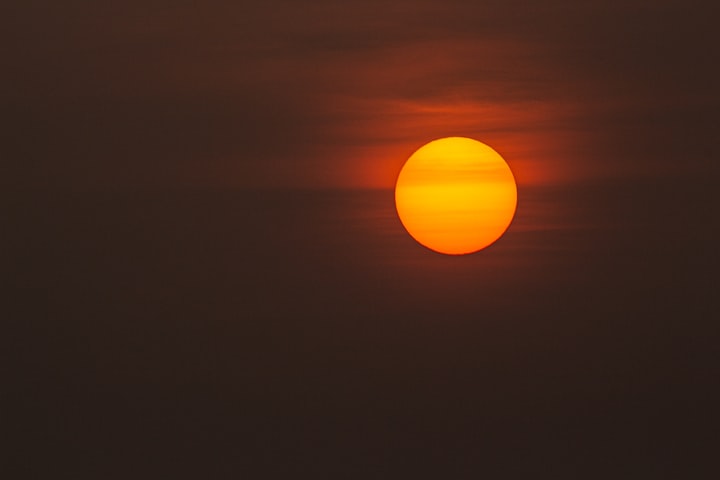20 Fun Facts About the Sun You Probably Didn't Know
Fun Facts About The Sun

The sun has been around since the beginning of time, and that’s no exaggeration. It is literally one of the oldest things in existence; however, it isn’t just a random celestial body floating around in space. The sun provides light and warmth to our planet, as well as drives many natural processes here on Earth. That’s why there are so many interesting facts about the sun you probably didn’t know! In this article, we’ll go over 20 fun facts about the sun you probably didn’t know.
1) Our sun is a star

Our sun is a star. But it's not just any star! It's an important source of light and heat for our planet, which is why it is often called the sun. Did you know that people have been using it for centuries? The ancient Greeks called our sun Helios, after a god who rode across the sky every day in a golden chariot.
When Vikings first came to North America, they noticed that things never got dark in winter and named this new land after their home. In summer, when the sun was high in the sky all day long, Vikings set up bonfires at night to keep themselves warm. Today we still use fireplaces as well as electric lights (another invention from ancient Greece) when there isn't enough sunlight around us.
If it weren't for our sun there would be no life on Earth: That's because plants need sunlight to grow and provide food for animals like us! In fact, if it weren't for plants, we wouldn't even be able to breathe because oxygen is released by plant leaves during photosynthesis (turning carbon dioxide into oxygen).
2) The sun is an average star

The sun is an average star because it's average in temperature, density, and luminosity. It is not a supernova like Deneb or too dim like HD 189733. The sun emits most of its energy in the form of infrared light waves which we cannot see with our eyes but can be captured by infrared cameras.
Solar flares and coronal mass ejections are more commonly known as the Northern Lights on Earth because they are mainly seen in the sky after the sun sets while they're less frequent and weaker during daytime hours when we can still see the sun. With over 30 million recorded uses of the sun around the world, this is one resource that will not be going anywhere anytime soon!
3) Over one million Earths could fit inside the Sun

The number of spherical Earths that could fit inside a hollow Sun is around 960,000. To ensure there was no empty space, those Earths could be compressed, and 1,300,000 Earths could fit inside the Sun. 11,990 times as much surface area as the Earth, the Sun.
4) The Sun is almost a perfect sphere

The Sun is the closest thing to a perfect sphere ever seen in nature, with only a 10 km variation between its polar and equatorial diameters, considering how massive it is.
5) The Sun is responsible for 99.86% of the solar system's mass

Its mass is almost 330,000 times greater than Earth's. Its remaining mass is primarily made of helium and contains only 25% hydrogen.
6) The Sun is moving at a speed of 220 km/s (137 miles per second)

The distance to the galactic center is roughly 24,000–26,000 light years. Additionally, one circle of the Milky Way's center takes the Sun between 225 and 250 million years to complete.
7) Light from the Sun takes eight minutes to reach Earth

There are roughly 150 million kilometers between the Sun and the Earth on average (93 million miles). Light moves at a speed of 300,000 kilometers per second, therefore multiplying the two results in 500 seconds, or eight minutes and twenty seconds. While it takes millions of years for this energy to get from the Sun's core to its surface, it can reach Earth in a matter of minutes.
8) Nuclear fusion is how the Sun's core produces energy

Four hydrogen nuclei united into one helium nucleus yield this enormous quantity of energy.
9) The Earth will one day be consumed by the Sun

Instead of consuming helium, the Sun will continue to burn for another 130 million years after burning all of its hydrogen. It will grow throughout this time to a size where it will swallow up Mercury, Venus, and Earth. It will have developed into a red giant star by the time it gets to this point.
10) One day, the Sun will resemble Earth in size

The Sun will eventually disintegrate once it has gone through its red giant phase. It will retain its enormous mass, but its volume will be comparable to Earth's. It will thereafter be referred to as a white dwarf.
11) The Sun is of average age

At 4.5 billion years old, the Sun has burnt through about half of its hydrogen reserves and yet has enough to last for another 5 billion years of hydrogen combustion. The Sun is a yellow dwarf star right now. According to astronomers, the solar nebula is where the Sun (as well as the planets) first emerged some 4.59 billion years ago.
12) Many prehistoric civilizations believed that the Sun was a god

For instance, the sun deity of the Aztecs was Huitzilopochtli, whereas Ra was the name of the sun god of the ancient Egyptians. It makes sense that humans believed the Sun to be a god as it is vital for all life on Earth to exist and for food to be grown.
13) The Sun and Earth both rotate in the same direction

Like most planets, with the exception of Venus and Uranus, the Sun spins counterclockwise, from west to east, as seen from the north.
14) A strong magnetic field surrounds the Sun

Solar flares, or sunspots, are caused when the Sun releases magnetic energy during magnetic storms. On the surface of the Sun, sunspots are dark regions brought on by magnetic changes. They seem black because the surrounding locations' temperatures are substantially higher than theirs.
15) Solar winds are created by the Sun

These are plasma ejections, which are explosions of extremely hot charged particles that come from the corona, the outermost layer of the Sun. They can move across the solar system at speeds of up to 450 km/s.
16) The Sun's atmosphere is made up of three layers

The layers are the photosphere, chromosphere, and corona. The photosphere, which is the part of the universe that is visible to us, heats up to a temperature of roughly 6,000 degrees Kelvin.
17) The Sun's surface has a temperature of 5,505 °C

With a surface temperature between 5,000 and 5,700 degrees Celsius, it is a main-sequence star (9,000 and 10,300 degrees Fahrenheit). To compare, a blaze is around 600°C hotter than boiling water, which is 100°C.
18) The temperature inside the Sun can reach 15 million degrees Celsius (27 million degrees Fahrenheit).

In the Sun's core, nuclear fusion produces energy. At this point, hydrogen turns into helium. The Sun would also explode like a huge bomb if not for the fact that objects typically expand and its powerful gravitational pull.
19) There wouldn't be any life on Earth without the Sun

Without the Sun, it would be too cold for animals to survive, and plants need sunshine to produce food, thus there would be no life on Earth. Vegetation cannot grow without the energy provided by sunshine, and without vegetation, animals lack a source of food. The seasons, ocean currents, weather, and climates are all influenced by the Sun.
20) Every planet in the Solar System revolves around the Sun

In our solar system, every planet revolves around the Sun. This indicates that they orbit the Sun. A year is made up of 365 days because it takes the Earth 365 days to orbit the sun.
About the Creator
FactLife Tube
You're missing out if you haven't learned something new today.
This channel covers a wide range of themes, including health and wellness, love and relationships, psychology, self-improvement, inspiration, fun facts, and much more.






Comments
There are no comments for this story
Be the first to respond and start the conversation.